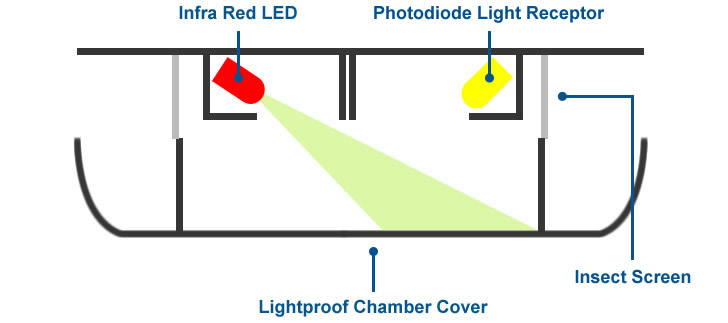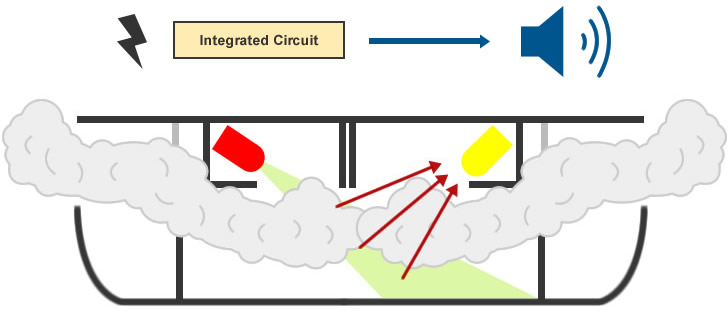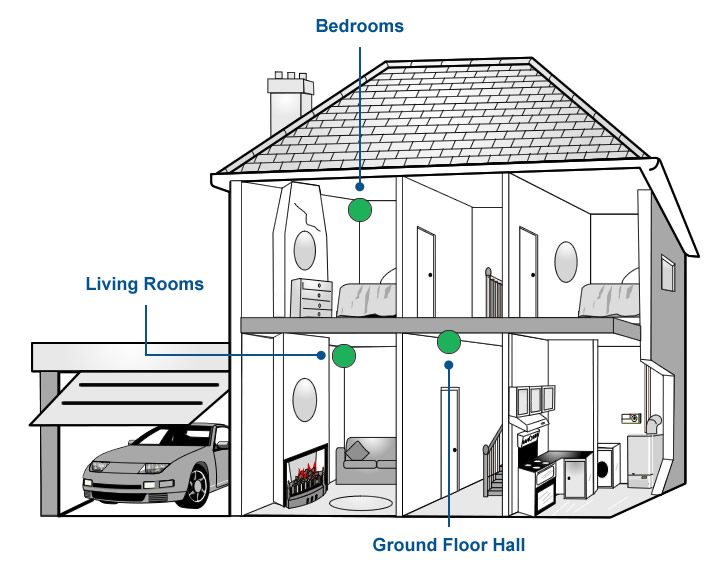-
Contact
Sales & Customer Service
0800 612 6537 support@safelincs.co.uk Live ChatDelivery Enquiries
0800 077 6149 - Resources
Fire & Safety Solutions
CALL OUR TEAM NOW 0800 612 6537
Lines open today 8am - 6pm
Free Delivery
on 100s of Products
Secure Payments
with our fast checkout
Live Customer Chat
Available Now
30 Day Accounts
for Public Sector
5 Star Customer Feedback
How Optical Smoke Alarms Work
An optical smoke alarm (also called photo-electric smoke alarm) works using the light scatter principle. The alarm contains a pulsed infrared LED which pulses a beam of light into the sensor chamber every 10 seconds to check for smoke particles.

Step 1 - Smoke Enters the Optical Chamber
When a fire breaks out smoke will enter the optical chamber through the opening vents. Smoke alarms from quality manufacturers have the chamber protected with insect screens to stop bugs entering and causing false alarms.

Step 2 - Infrared Light is Scattered
As the smoke enters the optical chamber, its particles cause the infrared light to be scattered onto the photodiode light receptor.

Step 3 - The Alarm Sounds
Once the scattered light hits the photodiode light receptor, a signal is sent to the integrated circuit which causes the alarm to sound alerting the occupants to the fire.

Where Optical Smoke Alarms can be Situated
Optical smoke alarms can be situated in bedrooms and living rooms and in the ground floor hallway. The optical technology makes the alarms less prone to false alarms from cooking fumes.

How Other Types of Smoke & Heat Alarms Work
View our other guides to find out how different types of smoke and heat alarms work.
(doc:519 V1.0). Our articles are reviewed regularly. However, any changes made to standards or legislation following the review date will not have been considered. Please note that we provide abridged, easy-to-understand guidance. To make detailed decisions about your fire safety provisions, you might require further advice or need to consult the full standards and legislation.



























